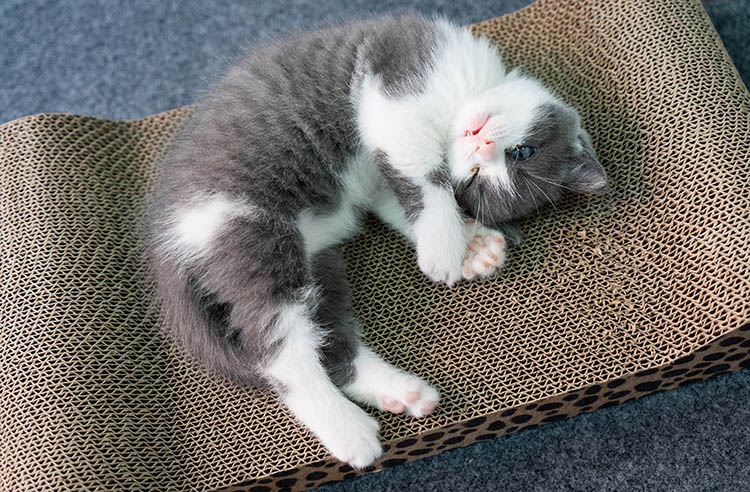PET TALK: What should you be looking for
Wednesday 13 October 2021 | Written by Dr. Ellen McBryde | Published in Opinion, Pet Talk

The important thing? Knowing whether your cat is a boy or a girl, Dr Ellen McBryde says. 21062205
Just this week, we’ve had two cats brought into the vet clinic with blocked bladders. This is a serious emergency, almost always affecting male cats. Dr Ellen McBryde discusses what you should be looking out for, as well as steps you can take at home to help prevent this condition.
First things first - what is a blocked bladder? The bladder is part of the urinary system which also includes the kidneys, and the tubes that connect these organs. The urethra is the tube connecting the bladder to the outside world and, along with the bladder, is part of the lower urinary tract. Feline Lower Urinary Tract Disease is a term used to describe a number of conditions affecting the bladder and urethra in cats.
A blocked bladder means urine is unable to pass through the urethra. As there is nowhere for the urine to go, and urine is still being produced by the kidneys, the bladder must stretch to hold all this fluid! Blockages are most commonly caused by crystals (or stones) or mucous plugs, and can often be linked to your cat’s diet. Stress can also be a risk factor - common causes of stress in cats include stray cats moving into the area, changes around the home (like new people or pets), and moving house, just to name a few.
So what should you be looking out for? A blocked bladder is very painful. Your cat won’t want to move around much, will hate being picked up, show very little interest in eating or drinking, and be licking themselves excessively. But most of all, they’ll be trying to go mimi - a lot! Often we can mistake this for constipation (which isn’t as serious) or, for cats that go to the toilet outside, we can miss this sign altogether. If you’re concerned something might be wrong, try and observe your cat toileting - if nothing is coming out, or only very small amounts, it’s time to call the vet.
READ MORE:
- Mobile desexing clinic completes Ngatangiia Puna
- PET TALK: Puna Desexing Clinics – what you need to know
- Eat, Sleep, Play, Repeat.
Now, this is usually a male cat problem. This is because males (of many species) have a longer and narrower urethra, which is more likely to get blocked. Females have a shorter, wider urethra which makes them more susceptible to bladder (or urinary tract) infections. Confusingly, these conditions can present the same. Both will cause your cat to try to go to the toilet more often, but with little success. And both are painful. However a bladder infection is rarely an emergency although it does need to be checked by a vet.
The important thing? Knowing whether your cat is a boy or a girl. Now that might seem like a silly statement, but it’s an easy mistake to make. Both of the cats that presented to the vet clinic this past week with bladder issues were thought to be females, but turned out to be males. If you’re not sure, ask a vet or jump online - you’re not the first person who’s struggled to tell the difference, I promise!
As I touched on before, risk factors for a blocked bladder include dry food diets (in this vet’s experience, especially Friskies) and stress, as well as obesity and multi-cat households. Although we can’t always prevent this condition from occurring, managing these risks at home will mean your cat will be less likely to suffer from a blocked bladder in his lifetime - and that’s definitely a good thing.














































